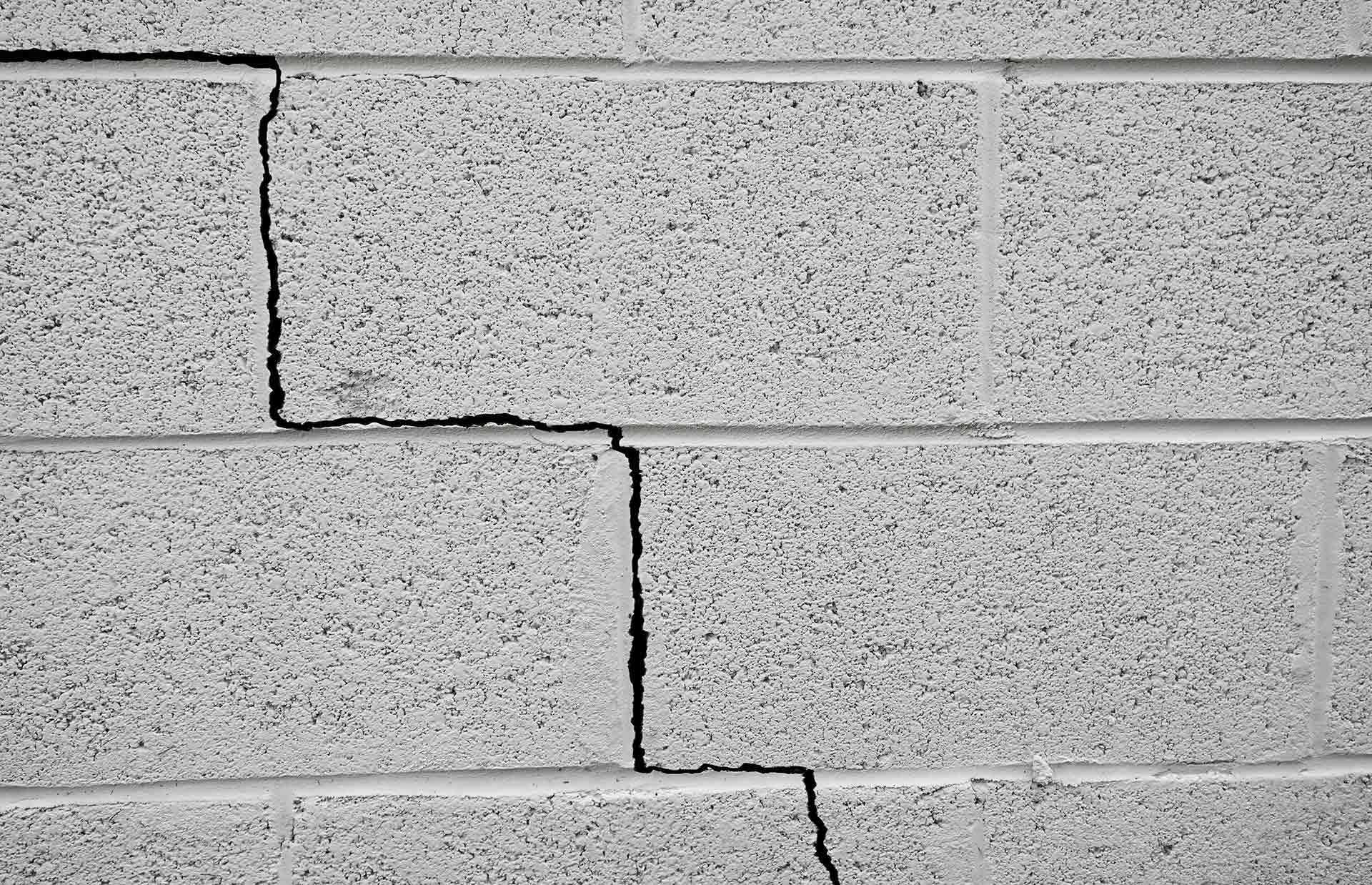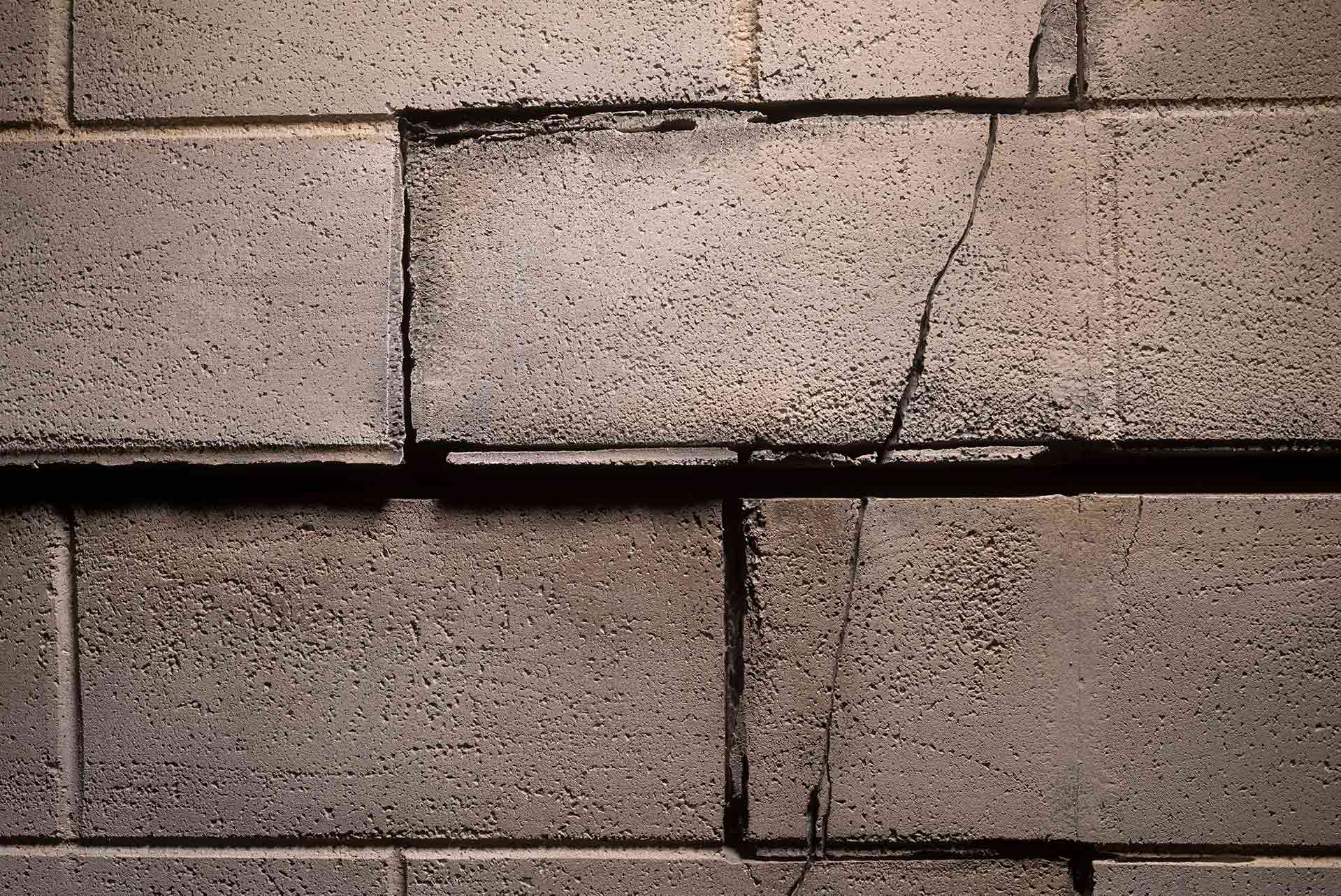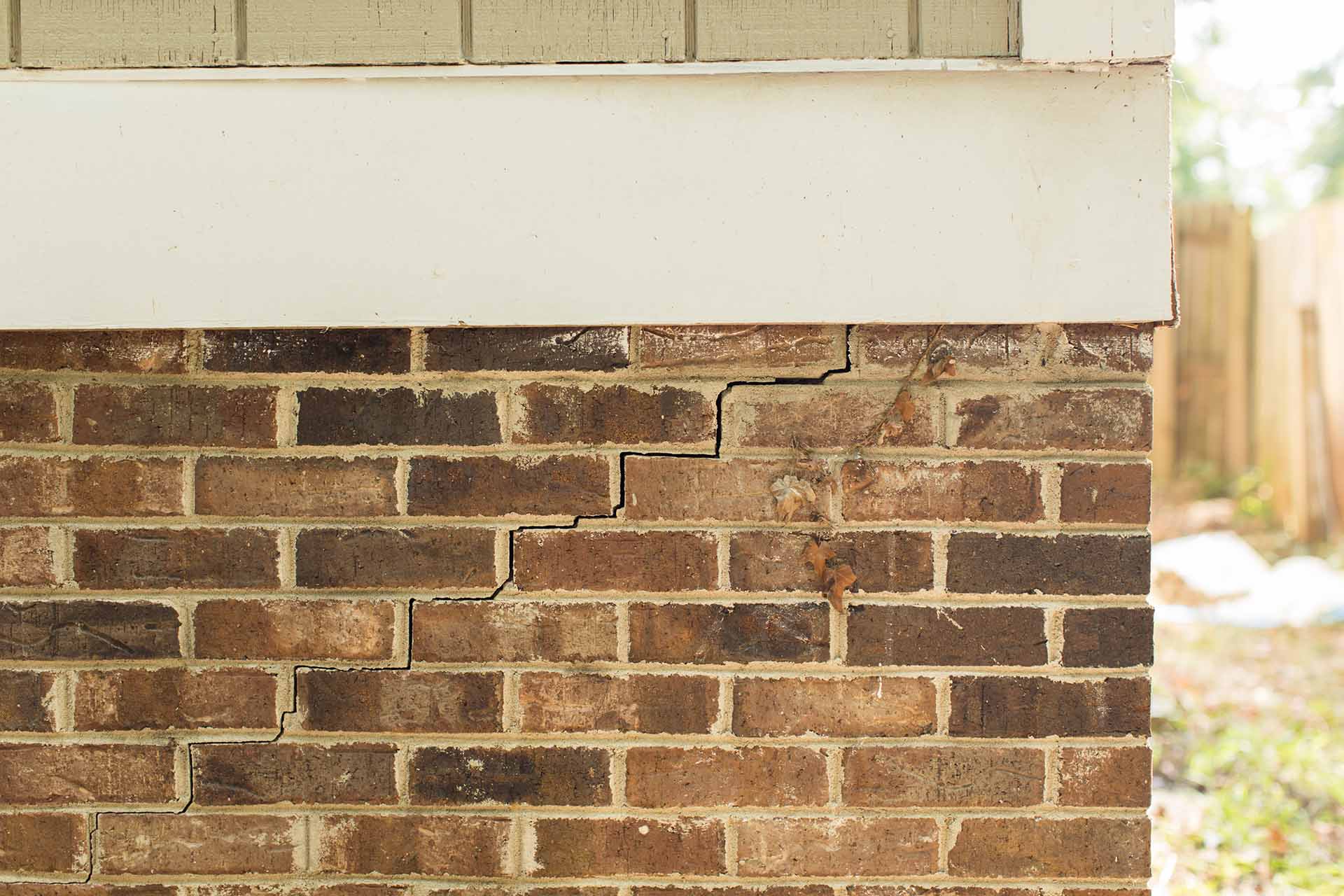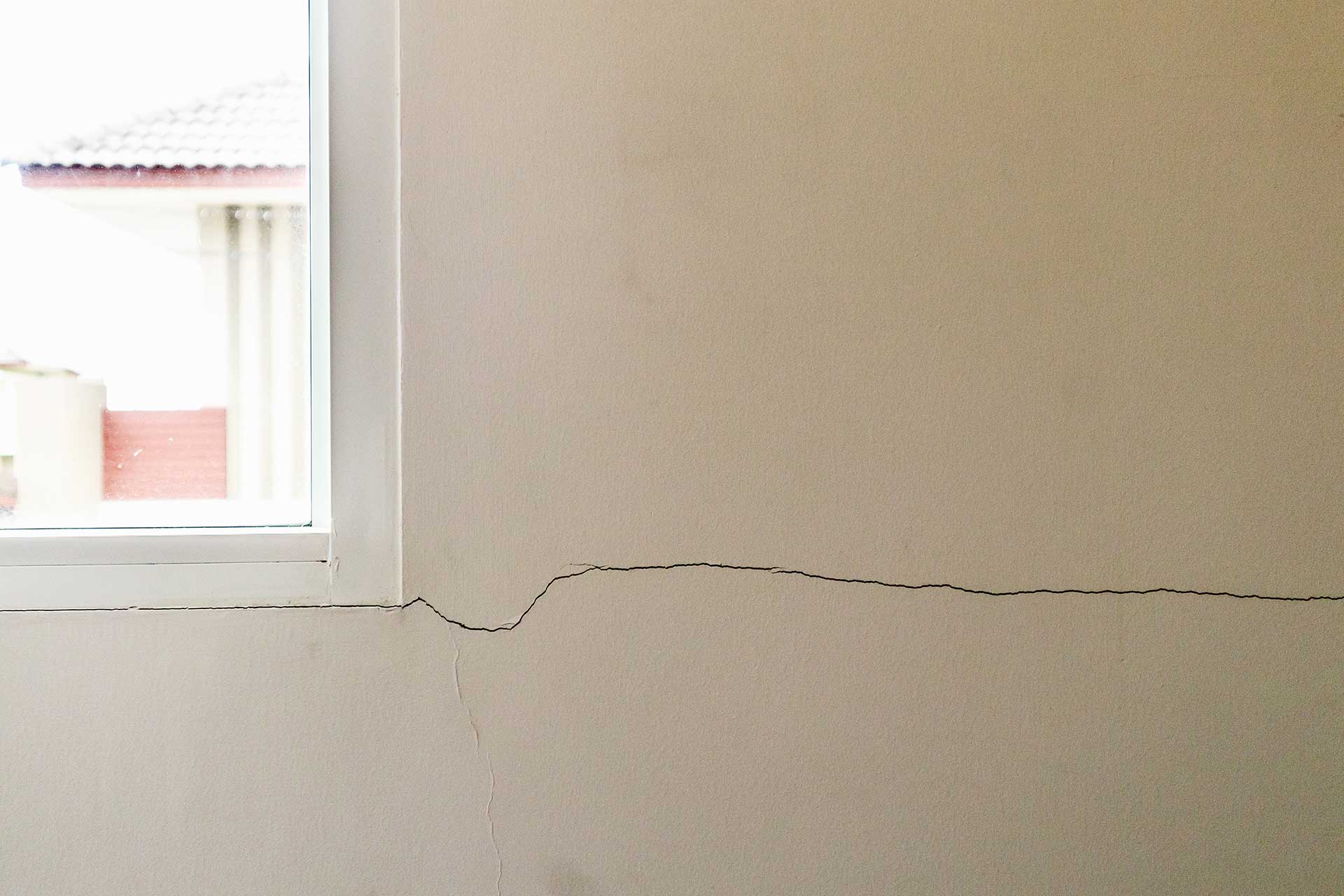Why Foundation Cracks Happen
It all comes down to the dirt. Soil settles over time, as it does, it becomes unable to bear the weight of your home, causing your foundation to settle as well. The signs of foundation settlement are unmistakable. If left unchecked, these problems will only get worse over time. Taking action before the damage increases is key.
If you have noticed cracks in your foundation, it’s important to understand which symptoms require professional attention. Of all the foundation cracks that we see, there are three that require professional attention: stair-step, horizontal and diagonal wall cracks.


Stair-Step Cracks
Stair-step pattern cracks appear exactly how they sound. They run in a diagonal line, tapering down or climbing upward in the shape of a staircase. These are especially noticeable in brick foundations, running along the seams between each brick. Stair-step cracks will worsen over time and are often accompanied by bowing walls.

Horizontal Cracks
Foundation cracks that run horizontally across basement walls indicate a serious structural issue. These are usually a sign of bowing walls caused by excessive pressure or shifting soils due to frost heave or oversaturation. Bowing walls may eventually fail if they are not corrected, leading to more damage and costly repairs.

Diagonal Cracks
Diagonal foundation wall cracks are one of the most common signs of settlement. However, they shouldn’t go unchecked. These types of cracks occur when some sections of your home settle more quickly than others. Some foundation wall cracks may be wider at the top than at the bottom, indicating that part of the foundation is sinking away from the rest.
Schedule a Free Inspection in Montana or Wyoming
If you notice foundation cracks in your home, don’t wait to have them inspected. Damage from foundation problems will just get worse over time. At Yellowstone Structural Systems, our team is specially trained to identify specific foundation issues and solve them with the best possible techniques and products on the market.




